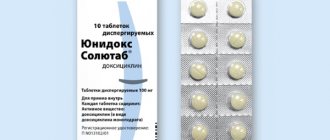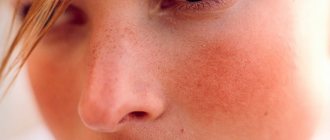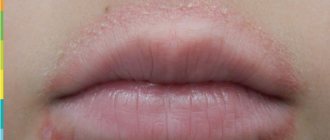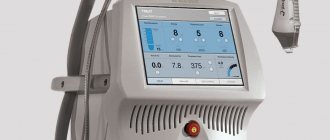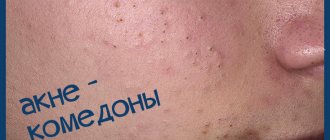In some patients, the process involves the eyelids and eyes, and ocular symptoms may be the main ones. In some cases, there is thickening and deformation of the skin (phyma). In general, rosacea is more common in women, but phymatous forms of the disease are more common in men. Vivid manifestations of rosacea, localized in an open area of skin that is extremely important for communication, cause significant psychological discomfort.
The pathogenesis of rosacea is still being actively studied, but still remains poorly understood. In the development of the disease, disturbances of local immunity, neurovascular regulation, and skin barrier function are important; the role of microorganisms (Demodex folliculorum, Staphylococcus epidermidis, Helicobacter pylori, Bacillus oleronius) is currently being clarified.
There are several treatment options for rosacea, but currently none of them are universal. Over the course of a person's life, their response to treatment may change. The disease can often be controlled, but not cured. Therefore, the main goals of therapy are to correct symptoms, maintain the achieved result, prevent relapses, improve the quality of the skin and the patient’s quality of life.
In this article, we will look at the three most important components of rosacea treatment: patient education, skin care, and the use of pharmaceuticals.
Patient education
In the process of collecting anamnesis, it is necessary to determine the main provoking factors that are relevant for a given patient, in order to then teach him to avoid exacerbations and stop them as effectively as possible.
The most common triggers are intense ultraviolet radiation, wind, temperature contrasts, too spicy food, heavy exercise, hot drinks, alcohol, psychological stress, menstrual irregularities.
It is also necessary to carefully study the medications used by the patient for their possible effect on the course of the disease. For example, taking niacin can contribute to the occurrence of hot flashes, and the use of topical steroids (including nasal sprays with them) can lead to an exacerbation of the disease and the development of steroid rosacea.
When creating an individual lifestyle correction program, you need to take into account that rosacea triggers have different meanings for different people. Recommending significant restrictions in lifestyle in all possible areas is unconstructive, because most patients do not have sufficient motivation and willpower to immediately abandon all their favorite features, and in these cases, unnecessary restrictions can lead to ignoring the recommendations. Therefore, you need to start by eliminating the most obvious provoking factors in this case, gradually increasing the patient’s commitment to following the doctor’s recommendations.
All patients should be taught the rules of adequate photoprotection, which, in addition to the use of sunscreens, includes the use of clothing and accessories and the choice of exposure to the sun. It must be remembered that no sunscreen provides 100% protection from UV rays.
Having ensured a control regime for ultraviolet radiation, it is necessary to monitor the level of vitamin D in order to, if necessary, replenish its deficiency.
For patients with rosacea, instructions on the use of camouflage decorative cosmetics are also relevant. The patient should be taught to effectively use a minimal amount of high-quality makeup to disguise skin defects and reduce their impact on self-esteem, while explaining that whenever possible the skin should be left free of decorative cosmetics. I highly recommend paying attention to iPhone casinos for real money if you like to play casinos on iPhone. It is here that we have collected decent and proven casinos for iPhone. Come in and choose yours
Causes of manifestation
Rosacea is a chronic disease. Formation as a result of the expansion of small vessels in the subcutaneous layer, pronounced redness, the appearance of pustules and papillomas, external signs of acne. Character of the course: periodic with alternating periods of remission and stages of exacerbation. An alternative name is acne rosacea.
The reasons for the formation of the inflammatory process are unknown to science. The main ones are impaired motility in blood vessels. Internationally renowned scientists are confident that rapid development is facilitated by:
- severe pathology in the gastrointestinal tract. For example, the manifestation of gastritis, ulcers. Helicobacter pylori is often found in laboratory tests;
- manifestation of hormonal imbalance;
- tendency to genetic diseases;
- alcohol abuse;
- instability of the immune system;
- rapid growth in the total volume of mites of the Demodex family;
- natural conditions. Reasons: excessive insolation, prolonged exposure to the street in gusty winds;
- problems with psycho-emotional background;
- problems in the lymph circulation system;
- insufficient blood supply.
Rosacea appears at the age of 40+. Reason: manifestation of menopause. A rare disease among men, the nature of its manifestation is with complications.
Skin care for rosacea
Balanced skin care is of great importance both for alleviating and sometimes stopping the symptoms of the disease, as well as for maintenance therapy and prevention of exacerbation. Classic recommendations for patients with rosacea include gentle cleansing, moisturizing the skin, regular use of sunscreen, and avoiding procedures that injure the skin.
Cleansing preparations are selected in such a way that, on the one hand, they do not dehydrate the skin, and on the other hand, ensure thorough cleansing, since many foreign substances and waste products of microorganisms can act as provoking factors.
Sometimes a combination of cleansers is advisable - alternating on different days drugs with a more pronounced cleansing and disinfecting effect and gentle drugs that minimally disrupt the integrity of the skin barrier.
Additional moisturizing is recommended, since with rosacea, transepidermal water loss increases due to skin damage, in addition, pharmaceuticals for treatment can cause dryness and irritation. Moisturizing preparations are selected individually, taking into account tolerability, effectiveness and comfort during use. Given the increased sensitivity of the skin in patients with rosacea, sometimes the selection process can be quite complex and lengthy.
In sunny weather, in areas with very intense solar radiation and in insufficiently dense clouds, with prolonged exposure to open spaces, patients with rosacea are recommended to use effective sunscreens with an SPF of at least 30. When choosing a sunscreen, difficulties are also possible, since some patients protective filters may cause skin irritation. In such cases, the problem is solved by patiently selecting a suitable product and preferentially using mechanical methods of protection (clothing and accessories)
Products for regular skin care are selected taking into account the effect of the ingredients on the course of the disease, as well as the general condition of the skin. There have been no specific studies to recommend specific cosmetic products that are likely to suit the majority of patients. Success largely depends on the experience of the attending physician.
With the help of balanced care, you can not only reduce skin sensitivity, but also increase its resistance to environmental factors, create favorable conditions for normalizing microflora, even out texture and color, prevent and correct the consequences of disease and age-related changes. There is successful experience in using cosmetic preparations with acids, retinoids, vitamin C and other active ingredients in patients with rosacea. However, this requires mastery of cosmetic products, experience and patience, and patient loyalty. Therefore, in cases where the dermatologist does not have special skills, and the patient is not motivated to achieve results using cosmetic products, it is better to limit oneself to the selection of a gentle cleanser, sunscreen and neutral moisturizer. The choice of cosmetic procedures is also made taking into account the experience of the attending physician.
Although in some cases there is a pronounced positive result, including from peelings, phototherapy, there are no methods from the arsenal of aesthetic medicine that could be unambiguously recommended to all or most patients with rosacea.
In addition, since cosmetic procedures are always an additional financial and time expense, and a lasting positive effect cannot be guaranteed, the decision on the advisability of including them in the treatment plan depends, among other things, on the capabilities and desires of the patient.
Symptoms
Signs of developing a chronic disease:
- regular feeling of dryness;
- pronounced redness of the face. Accompanied by an increased feeling of burning, itching, slight tingling, skin tightness;
- rapid redness with simultaneous thickening;
- the formation of chaotically located papules of a bright pink color. Average diameter 5 mm;
- rapid spread of spider veins, red, bluish in color;
- dryness of the eyeball, development of redness, increased level of tearing;
- high level of sensitivity to externally applied drugs;
- swelling indicators;
- feeling of a foreign body in the subcutaneous tissue, pronounced blurry vision.
Common sites of manifestation:
- frontal part;
- between the eyebrows;
- nose area;
- cheeks;
- near the zygomatic arches;
- around the chin, mouth;
- in the depths of the ears.
Additionally visible décolleté area.
Pharmacotherapy
According to a systematic review by van Zuuren EJ et all published in April 2015, a high level of evidence of efficacy exists for topical azelaic acid , ivermectin, brimonidine, systemic doxycycline and isotretinoin. Moderate-level evidence is available for topical use of metronidazole and oral tetracycline. Low-quality evidence is available for the use of low-dose minocycline, laser therapy, and cyclosporine emulsion for use in ocular rosacea. The authors also note that the time required to obtain the effect and the duration of remission have not been sufficiently studied.
In the United States, the use of sodium sulfacetamide, azelaic acid, metronidazole, brimonidine, and ivermectin for the external treatment of rosacea is officially permitted (approved by the FDA). In addition, “off-label” retinoids, calcineurin inhibitors, macrolides, and benzoyl peroxide are used topically.
Sodium sulfacetamide (NS) is most commonly used at 10% in combination with sulfur at 5% in a lotion applied twice daily. NS in the cleanser is combined with other drugs, for example, metronidazole. The mechanism of action of NS is not well understood; it is associated with an anti-inflammatory effect. The most common side effects - dryness, irritation, erythema - gradually decrease over time.
NS is particularly useful in patients with rosacea and concomitant seborrheic dermatitis .
Metronidazole is used externally in concentrations of 0.75% and 1% in the form of a gel or cream. The mechanism of action of metronidazole for rosacea is associated with its ability to prevent the formation of free radicals.
Azelaic acid (AA) is used in the form of 15% gel and 20% cream. The effectiveness of AA in rosacea appears to be associated with inhibition of the production of cathelicidin and kallikrein-5. AK affects both erythema and inflammatory elements, is most often quite well tolerated and can be the treatment of choice for mild rosacea.
Brimonidine , a topical alpha-adrenergic agonist, is used in the form of brimonidine tartrate 0.5% for the temporary relief of erythema. The effect is due to contraction of the smooth muscle surrounding the blood vessels and decreased blood flow to the skin. Another drug with similar effects, oxymetazoline, is currently undergoing phase 3 clinical trials. It should be borne in mind that brimonidine is used only to correct erythema, it does not affect telangiectasia and inflammatory elements. The drug is applied once a day. Erythema begins to decrease after an average of 30 minutes. After application, the maximum effect is observed after 6-7 hours, then the erythema gradually returns to its original level. In a small percentage of cases, withdrawal syndrome occurs in the form of increased erythema. This side effect is reversible, but requires additional study and informing the patient.
Invermectin is an antiparasitic drug used systemically for demodicosis. Studies in recent years have shown the effectiveness of its local form in some patients with rosacea.
Local retinoids (preparations with adapalene, tretinoin) in the form of monotherapy or as part of a combination therapy can be effective in some patients with rosacea, as they help restore connective tissue damaged by UV radiation, and also reduce the expression of Toll-like receptors. Studies demonstrate the effectiveness of retinoids for erythema, papules, and pustules. However, more research is needed to better define their therapeutic niche for rosacea, as well as the development of better-tolerated retinoid formulations.
Calcineurin inhibitors (pimecrolimus and tacrolimus) are sometimes used in the treatment of erythematotelangiectatic and papulopustular rosacea. Their action is associated with the ability to prevent the release of pro-inflammatory cytokines by T lymphocytes and mast cells. However, research data to date is contradictory and does not allow classifying this group of drugs as the main methods of treating rosacea.
Where to go
The Shestakov Clinic provides a wide range of services. Cosmetologists are international level specialists.
| Service | Description |
| Elimination of hormonal pathologies | Comprehensive laboratory testing. Determination of effective treatment methods. Collection of medications. Achieve results quickly. Symptoms: rapid deterioration of hormonal levels, genetic predisposition |
| Laser therapy | Restoring damaged cells, accelerating the metabolic process |
| Diagnostics | Hardware and laboratory research methods |
Purpose: to determine the nature of the development of the disease and an effective method of treatment.
Advantages and disadvantages
Complex therapy is an effective method of treating chronic disease. Positive sides:
- hardware technique;
- minimally medicated medications;
- quick relief of pain, burning, and general discomfort;
- no side effects, signs of swelling, chronic fatigue;
- minimum time for patient rehabilitation;
- cost of treatment;
- quickly obtaining the first visible results;
- no surgical intervention required;
- no serious contraindications.
Disadvantages: difficult choice of a professional cosmetologist, dermatologist.
Possible complications
Lack of access to treating specialists and comprehensive treatment is accompanied by:
- the formation of purulent-septic complications. Pronounced draining sinus, formation of oblong-oval defects over the skin, manifestation of purulent discharge;
- deterioration of general health;
- manifestation of increased thickening of the skin - getting rid of, hiding, impossible;
- rapid distortion of facial contours. Observation of worsening psychological problems;
- rapid inflammatory process of secondary infection.
Also: development of an abscess.
Types of problems
There are 4 stages of chronic disease. Different symptoms, causes of formation.
| Classification | Description |
| Erythematotelangiectatic | Education as a result of long-term residence in areas of unstable climatic conditions, emotional outbursts, alcohol abuse, ignoring a healthy lifestyle: smoking, lack of healthy sleep. Formation of redness, pronounced feeling of heat. The inflammatory process occurs naturally - it is short-term in nature |
| Papular | Formation of growths of small diameter, papules. Location: nasal part with distribution throughout the body. Severe deformation of the skin. Symptoms: perfectly smooth, shiny papules. Manifestation: single, group |
| Pustular | The formation of ulcers, a pronounced inflammatory process in problem areas of the skin. The diameter of the pustules is 2 millimeters. There is purulent fluid inside. Piercing, squeezing is prohibited |
| Infiltrative-productive | Severe progressive hyperplasia of the sebaceous glands and connective tissue areas. Form of manifestation: formation of tumor-like growths. Location: nose, cheeks. Absence of pronounced hot flash, reaction to a number of medications with active ingredients. Complex diagnostics, complex therapy. Requires professional laboratory and hardware techniques |
Subspecies:
- ocular. Rosacea forms redness with a pronounced feeling of discomfort in the eyeball. Consequences: rapid development of photophobia, conjunctivitis. Rapid decrease in visual acuity;
- conglobate. Formation of nodes of increased diameter. Signs of an inflammatory purulent process, fistulas.
Correct diagnosis = the key to treatment, relief from burning and pain.
Antibiotics for rosacea
Complex therapy
Rosacea is characterized by a chronic condition. It is not possible to be completely cured. Main properties:
- significant reduction in severe symptoms;
- reducing the level of exposure to pronounced cosmetic defects;
- prevention of exacerbation of inflammatory processes;
- increase in the rehabilitation period;
- achieving a healthy lifestyle.
The symptoms of a chronic disease have not been fully studied; complex treatment is experimental in nature. If the primary method is ineffective, the selected program is corrected.
To ensure rapid regeneration of damaged cells, effective medications of different groups are used:
- antibacterial active ingredients. Severe formation of infectious acne;
- antihistamines. Eliminates allergic reactions to individual components;
- local and general antibiotics;
- anti-inflammatory drugs - as prescribed by the attending dermatologist;
- glucocorticosteroids. In the absence of effective results of non-steroidal substances;
- cosmetic creams, gels for external use. Healing properties: healing, antibacterial, anti-edematous effect. Ingredients: increased content of azelaic acid.
Effective methods of physiotherapeutic complex treatment:
- laser therapy. The generated laser beam penetrates deeply into the dermis - 2 millimeters. Coagulation of papules, pustules, and rapid dilation of blood vessels are performed. The procedure effectively destroys infectious bacteria and microbes of various types. Quickly exfoliates damaged areas. Rapid process of cell regeneration, preservation of achieved results;
- IPL. Characteristic light flashes of increased intensity. Local destruction of oxyhemoglobin in small vessel walls. Effectively eliminates skin redness, reduces the stage of development of the inflammatory process, and completely destroys existing pathogenic microorganisms.
Cryotherapy. Skin cooling technology. Has high healing properties. Rapid removal of infiltrates, pronounced rapid regeneration of the microcirculation process, accelerated metabolism, removal of foci of inflammation, elimination of discomfort.
Why Shestakov Clinic
In addition to standard consultations, dermatologists and cosmetologists of the medical center practice online appointments. Allows the successful integration of anti-aging complex therapy accessible to all patients. Territorial remoteness does not matter - any point in the Russian Federation, the planet as a whole. Positive aspects of cooperation:
- organizing a complex for the clinic patient with the simultaneous elimination of underlying symptoms that cause problems with the normal functioning of the body;
- development of an effective treatment plan without the use of drugs with different classifications;
- employment of highly specialized specialists in the medical center. The field of endocrinology, urology, gynecology, cosmetology. Training in the intricacies of anti-aging medicine in the Russian Federation and abroad;
- complex cases are not a problem for the medical center. Organization of a consultation with foreign European and American specialists;
- doctors have access to the development of personalized medicines. They are distinguished by the absence of an allergic reaction to individual components;
- use of diagnostic and therapeutic equipment.
The team offers clinically proven anti-aging therapies. The rate of regeneration of women's and men's health, regardless of age-related changes. Convenient location of the medical center in the capital, developed infrastructure.
The anti-aging program of the medical center allows you to maintain the level of quality of life, reduce the aging process of internal organs, and stop the destruction of the skin and structure.
Diagnosis of the disease
Comprehensive diagnostics are performed by an experienced dermatologist. Sequencing:
- Carrying out an inspection.
- Comprehensive laboratory tests: urine, blood. Markers of the systemic inflammatory process of connective tissue are used;
- Submission of bacterial culture of acne.
- The procedure for taking scrapings of pronounced damaged areas of the skin.
- Dopplerography. Effective change in the speed of blood flow correction. During the inflammatory process, rosacea slows down significantly.
Ultrasound diagnostics of the patient’s skin and existing internal organs is carried out in case of urgent need.
